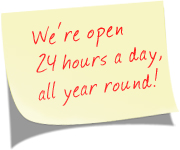Site Menu




Sorry, but we couldn't find that page |
Well, this is slightly embarassing! The link you clicked seems to have disappeared.
There are two main areas you're probably looking for:
If you've arrived at this page from an outside link, you may wish to visit our home page or sitemap.
Contact us if you need assistance.
